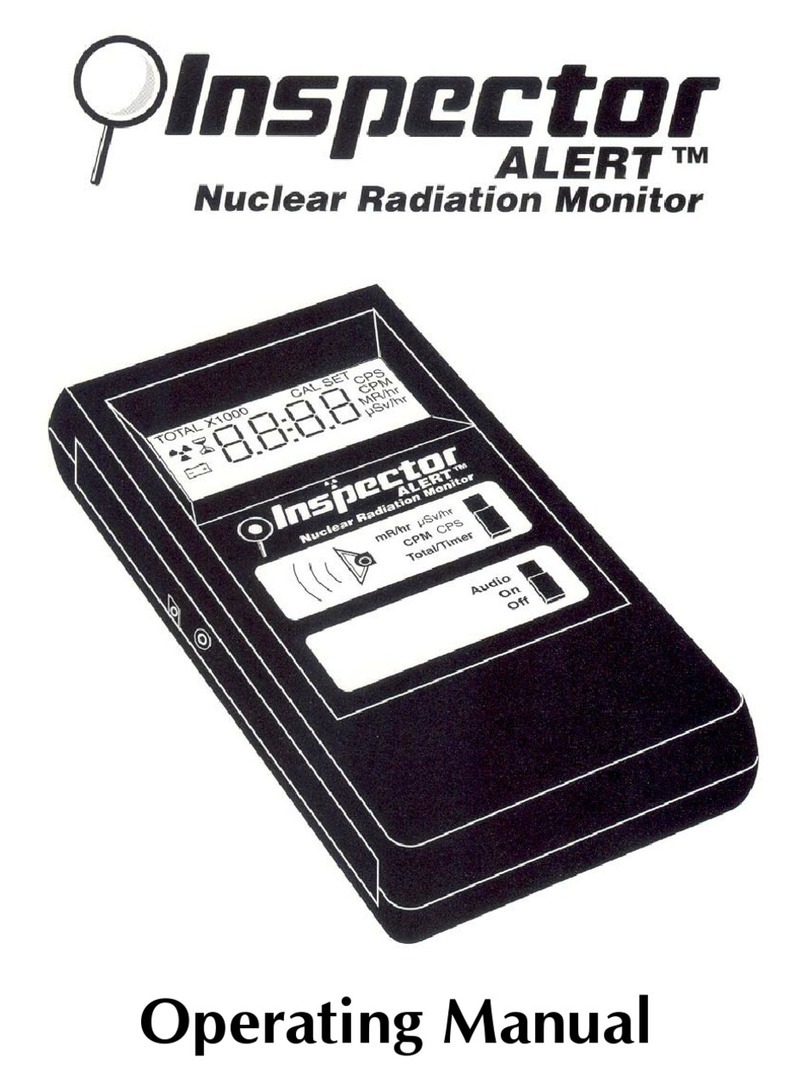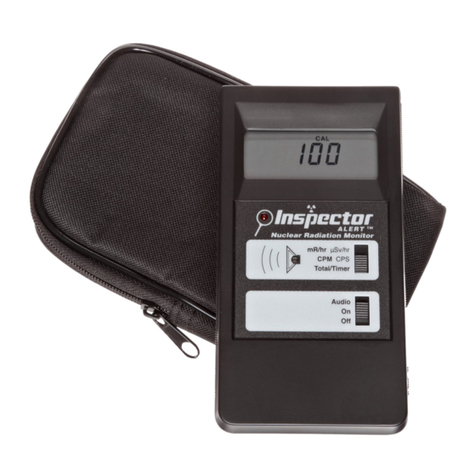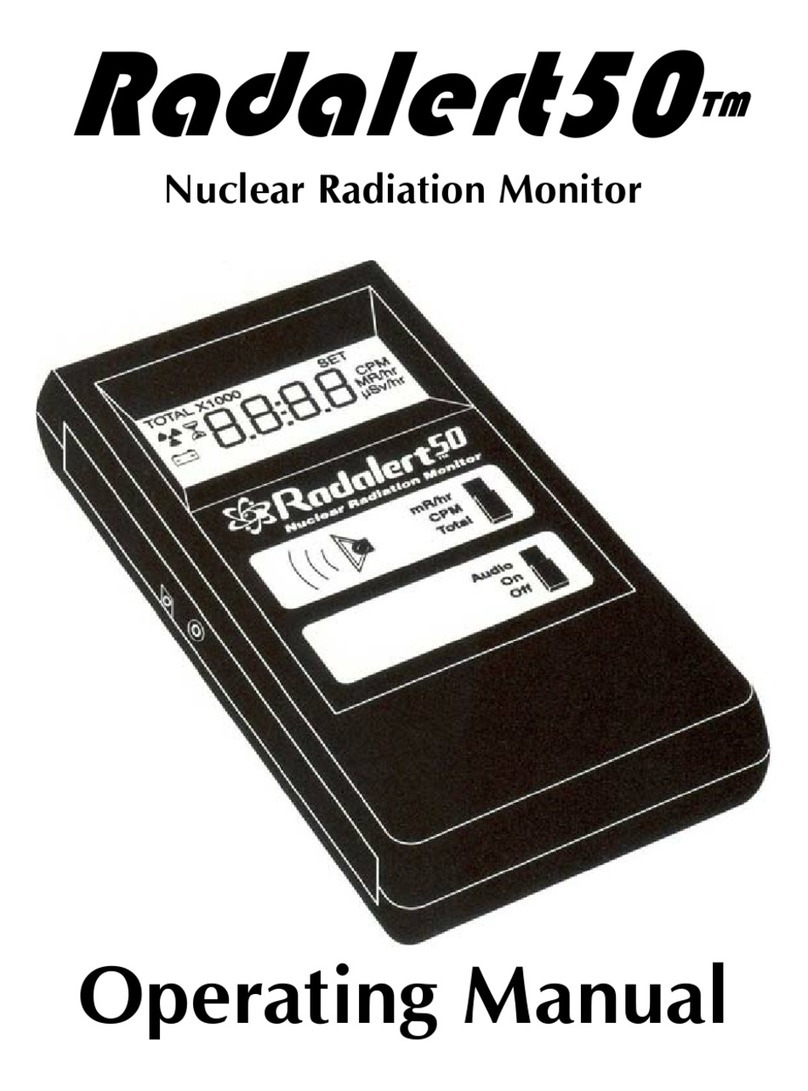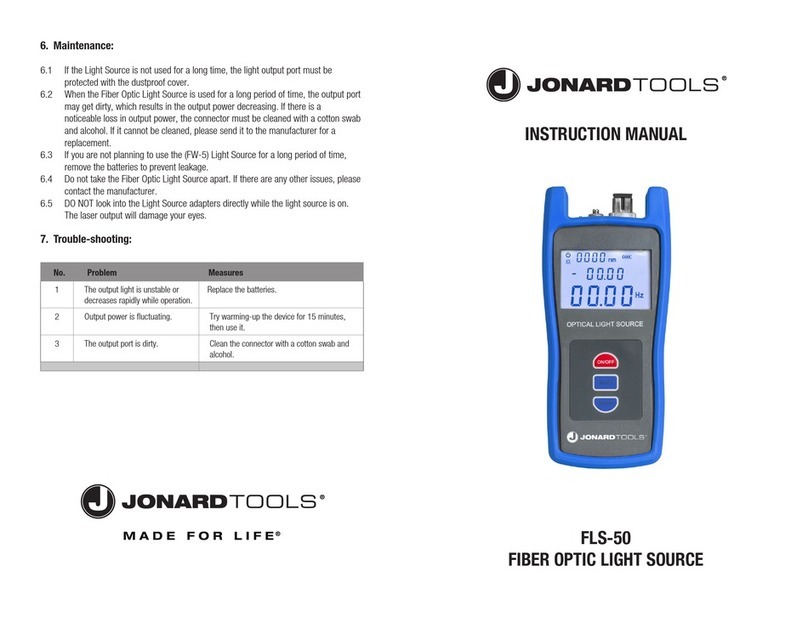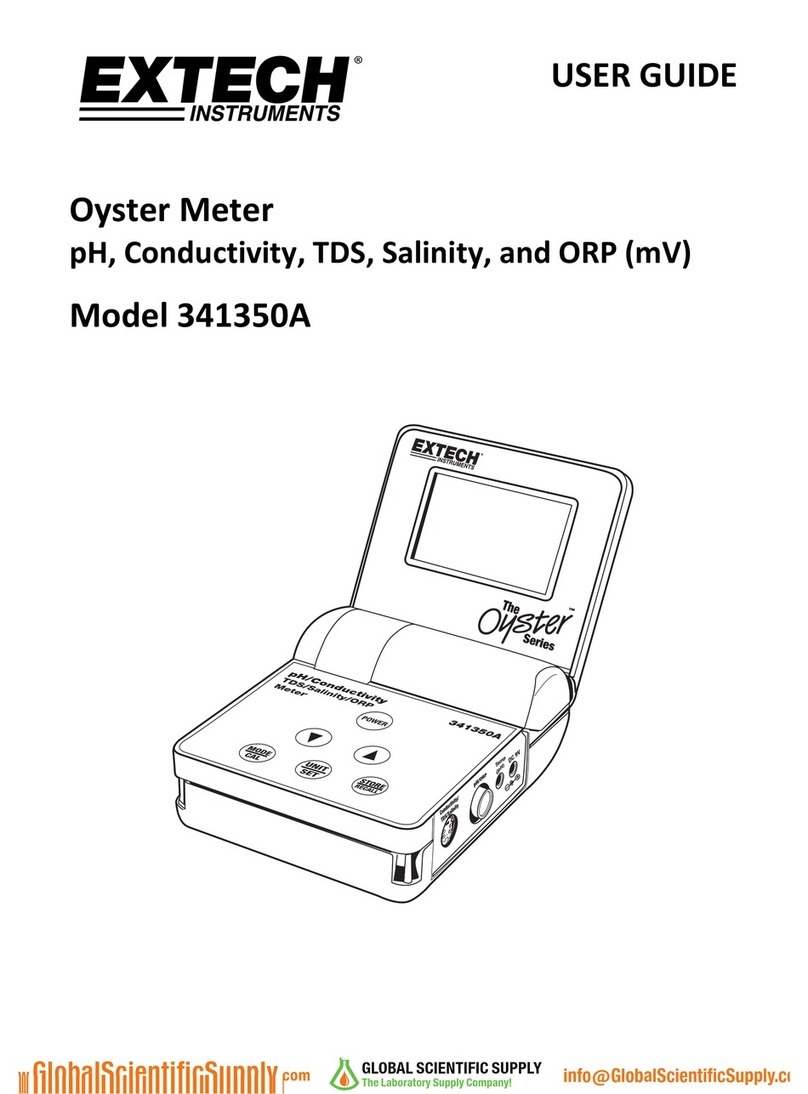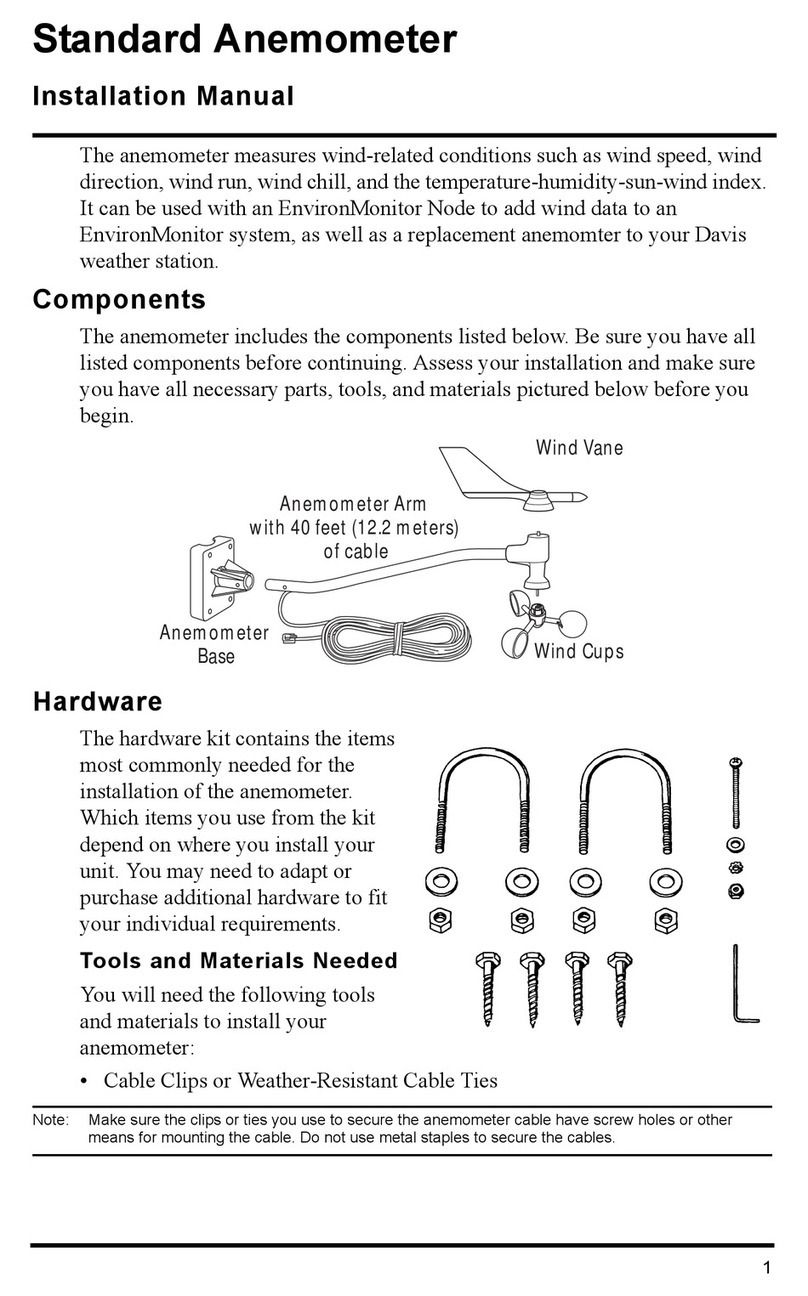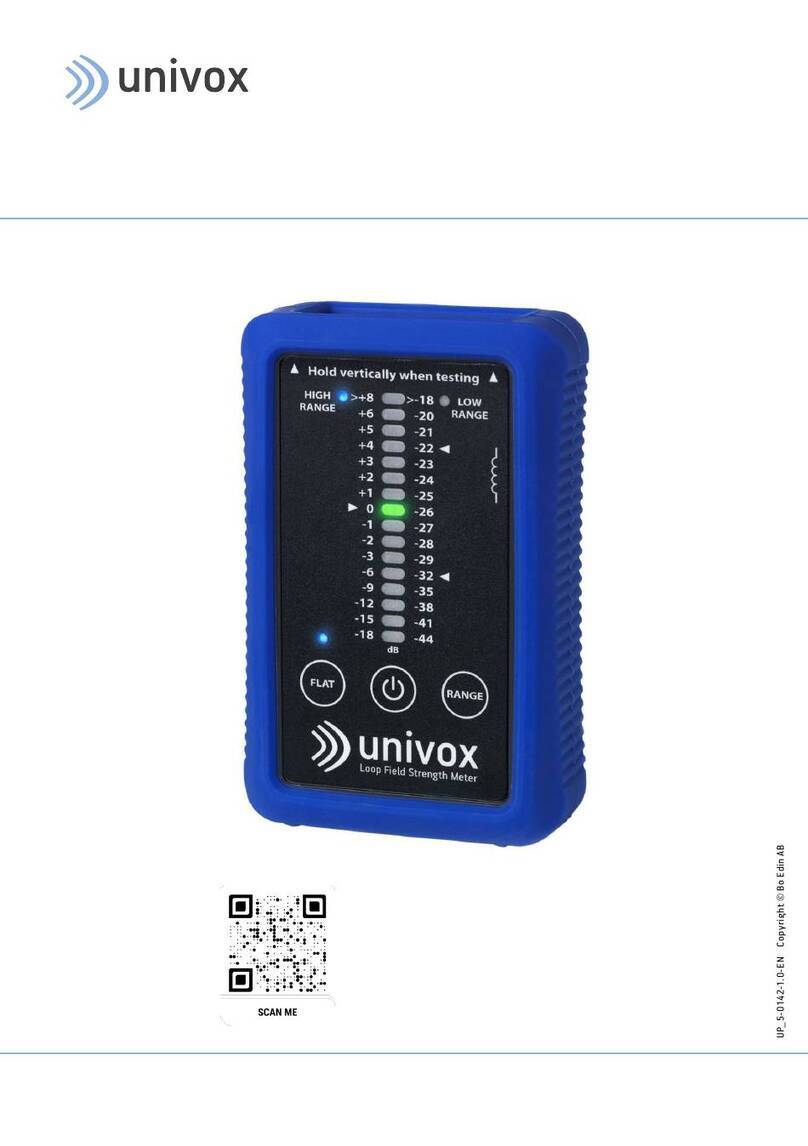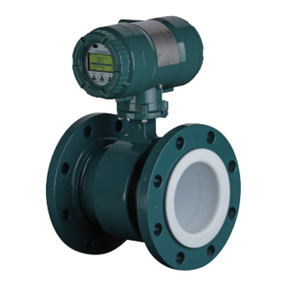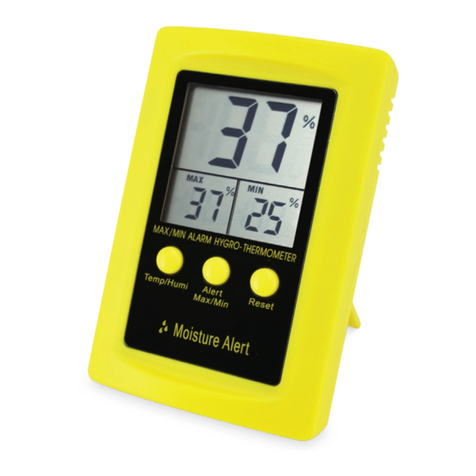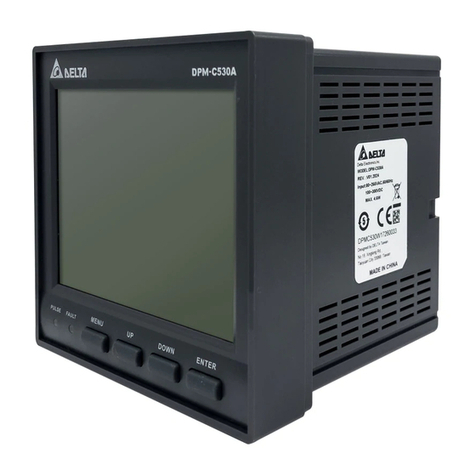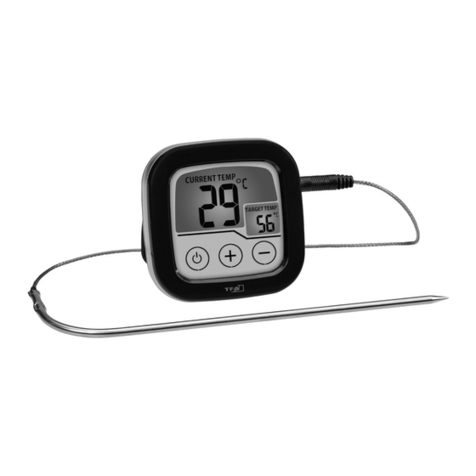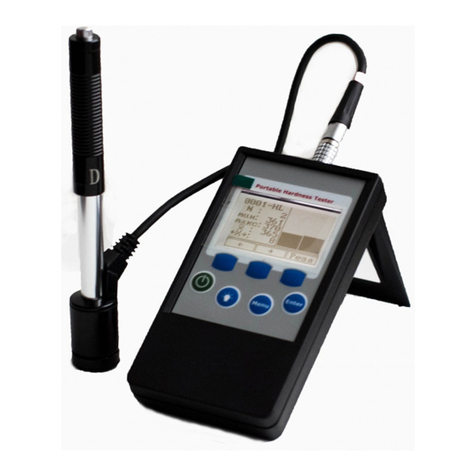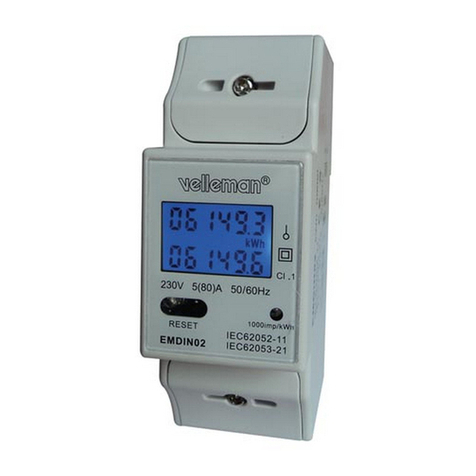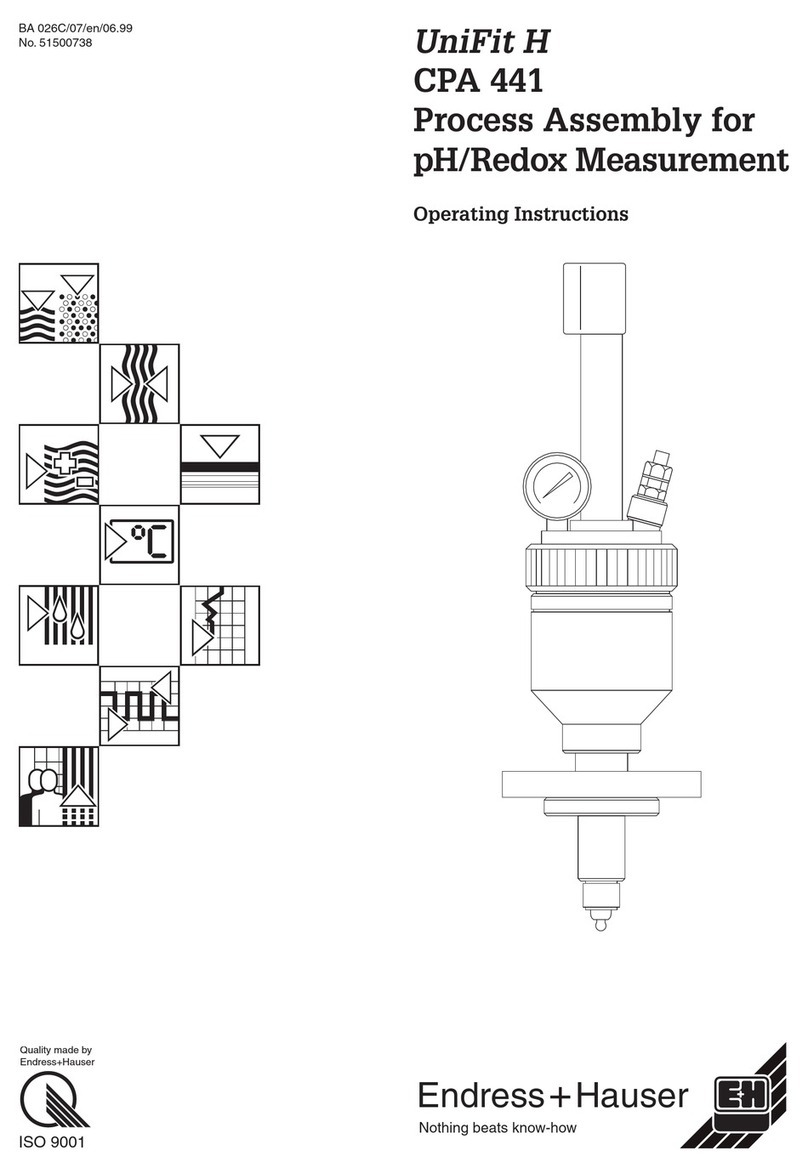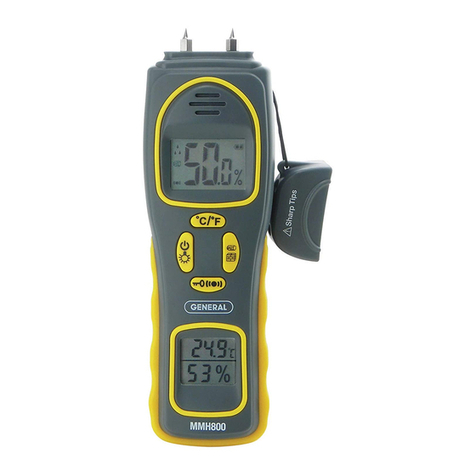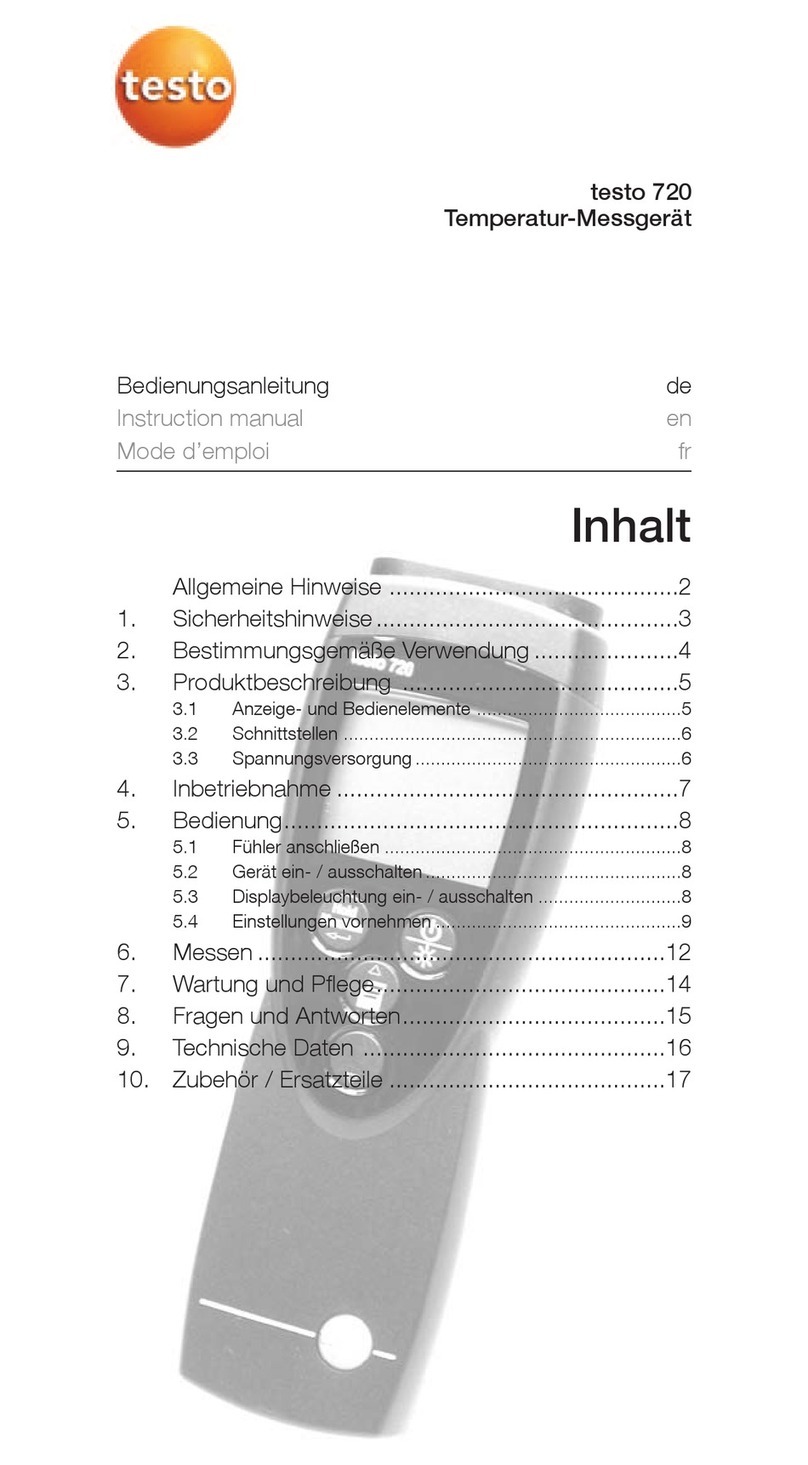International Medcom Radalert 100 User manual

Radalert 100
Nuclear Radiation Monitor
Operating Manual

Copyright 2006 by International Medcom, Inc. All rights reserved.

Contents
1 Introduction 1
How the Radalert 100 Detects Radiation 1
2 Features 2
The Display 3
The Switches 4
The Detector 5
The Ports 5
3 Operation 6
Units of Measurement 6
Starting the Radalert 100 6
Operating Modes 6
Taking a Timed Total Count 7
Operating Ranges and Response Times 8
Using the Alert 10
The Utility Menu 11
Interfacing to an External Device 12
4 Common Procedures 13
Establishing the Background Count 13
Environmental Area Monitoring 13
Checking an Object 14
5 Maintenance 15
Calibration 15
Precautions 18
Troubleshooting 19
6 Basics of Radiation and Its Measurement 21
Ionizing Radiation 21
Measuring Radiation 23
Radiation Measurement Units 24
Higher Than Normal Readings 25
Appendix A Technical Specifications 26
Warranty 28


1
1 Introduction
The Radalert™ 100 is a health and safety instrument that measures
alpha, beta, and gamma radiation. With the Radalert 100, you can:
•Monitor possible radiation exposure while working near
radionuclides
•Ensure compliance with regulatory standards
•Check for leakage from X-ray machines and other sources
•Set the alert level and use the Radalert 100 in Alert mode; if
the radiation goes above the level you set, the alert beeper
sounds to let you know
•Screen for environmental contamination or environmental
sources of radioactivity
•Connect the Radalert 100 to a computer or data logger to
record and tabulate your data
This manual gives complete instructions for using the Radalert 100
and procedures for common applications.
How the Radalert 100 Detects Radiation
The Radalert 100 uses a Geiger-Mueller tube to detect radiation.
The Geiger tube generates a pulse of electrical current each time
radiation passes through the tube and causes ionization. Each
pulse is electronically detected and registers as a count. The
Radalert 100 displays the counts in the mode you choose: counts
per minute (CPM), milliroentgens per hour (mR/hr), or total counts
for a timed period. In SI units, counts per second (CPS) and
microsieverts per hour (µSv/hr) are used.

2
2 Features
The Radalert 100 measures alpha, beta, gamma, and x-ray
radiation. This chapter briefly describes the Radalert 100's
functions. For more information on how to use the Radalert 100,
see Chapter 3, "Operation."
4 LCD
5 Mode Switch
6 On/Off/Audio
Switch
1
Count Light
2
Calibration
Input Port
3
Audio/Data
Output Port
7
+, –, and
Set Buttons 8 Alpha
Window
Set –+
The Radalert 100 counts ionizing events and displays the results on
the liquid crystal display (LCD) (4). You control which unit of
measurement is shown by using the mode switch.
Whenever the Radalert 100 is operating, the red count light (1)
flashes each time a count (i.e., an ionizing event) is detected.

3
The Display
Several indicators on the LCD show information about the mode
setting, the current function, and the battery condition.
A Numeric
Display
B Low Battery
Indicator
C Alert Mode
Indicator
D Timer
E Total Mode F X1000
Mode G Calibration
Mode H Timer, Alert or
Calibration Set
Mode
I Units of
Measurement
J Menu
•The numeric display (A) shows the current radiation level in
the unit specified by the mode switch setting.
•A small battery (B) appears to the left of the numeric display
to indicate low battery voltage.
•A radiation symbol (C) appears when the Alert feature is on.
•An hourglass (D) appears to the left of the numeric display
during a timed count.
•TOTAL (E) appears when the Radalert 100 is in Total mode.
•X1000 (F) appears when the radiation level is displayed in
X1000 mode.
•CAL (G) appears while you are calibrating the Radalert 100.
•SET (H) appears when you are setting the timer, the Alert
level, or the calibration factor, or working in the Utility Menu
(the numeric display shows the setting you are adjusting
instead of the current radiation level).
•The current unit of measurement (I)–CPM, CPS, mR/hr or µ
Sv/hr – is displayed to the right of the numeric display.

4
•MENU (J) appears when you are in the Utility Menu.
The Switches
The Radalert 100 has two switches on the front, and three buttons
on the end panel. Each switch has three settings, which are
described below.
On/Off/Audio Switch (6)
Audio. The Radalert 100 is on, and it makes a clicking sound
for each radiation event detected.
On. The Radalert 100 is operating, but audio is off.
Off. The Radalert 100 is not operating.
Mode Switch (5)
mR/hr µSv/hr. The LCD shows the current radiation level in
milliroentgens per hour from .001 to 110 or, when SI units are
used, in microsieverts per hour from .01 to 1100.
CPM CPS. The LCD shows the current radiation level in
counts per minute from 0 to 350,000 or, when SI units are
used, in counts per second from 0 to 3,500. When X1000 is
shown, multiply the numeric reading by 1000 to get the
complete reading.
Total/Timer. The display shows the accumulated total of
counts starting when the switch is turned to this position, from
0 to 9,999,000. When X1000 is shown, multiply the numeric
reading by 1000 to get the complete reading.
+, -, and SET Buttons (7)(on the end panel)
+ and – Buttons: These are used to adjust the numeric
display for timed counts, alert settings, and calibration
settings, and to scroll through the Utility Menu.
Set Button: This is used to set the alert, to set the correct
calibration reading, and to select items in the Utility Menu.

5
For more information, see “Taking a Timed Count,” “Using
the Alert,” and “The Utility Menu” in Chapter 3 and
“Calibration” in Chapter 5.
The Detector
The Radalert 100 uses a Geiger tube to detect radiation. Alpha
radiation does not penetrate most solid materials, so this Geiger
tube has a thin disk of mica, which alpha radiation can penetrate,
on its end. The screened opening at the top of the Radalert 100 is
called the alpha window (8). It allows alpha and low-energy beta
and gamma radiation to penetrate the mica end of the tube.
CAUTION: The mica end surface of the Geiger tube is fragile. Be
careful not to let anything penetrate the screen.
The Ports
There are two ports on the left side of the Radalert 100.
The calibration input port (2) is used for calibrating electronically
using a pulse generator. For more information, see “Calibrating
Electronically” in Chapter 5.
The output port (3) below the calibration input port allows you to
interface the Radalert 100 to a computer, data logger, earphones,
or other device using a 3.5 mm stereo plug. For more information,
see “Interfacing to an External Device” in Chapter 3.

6
3 Operation
The guidelines in this chapter describe how to use the Radalert
100.
Units of Measurement
The Radalert 100 is designed both for users of conventional units
(milliroentgens per hour and counts per minute) and for users of
SI units (microsieverts per hour and counts per second). To switch
between conventional and SI units, use the Utility Menu. See “The
Utility Menu” in this chapter.
Starting the Radalert 100
Be sure that a standard 9-volt alkaline battery is installed in the
battery compartment in the lower rear of the Radalert 100. Note:
When installing the battery, place the battery wires along the side
of the battery and not under it.
To start the Radalert 100, set the top switch to the mode you want,
and set the bottom switch to On or Audio. The Radalert 100 then
does a four-second system check, displaying all the indicators and
numbers.
After the system check, the radiation level is displayed in the
selected mode. One minute after you start the Radalert 100, a
short beep indicates that enough information has been collected to
ensure statistical validity.
Operating Modes
When the mode switch is set to mR/hr or CPM, the numeric
display is updated every three seconds. At low count rates,
significant changes in the radiation level displayed can take up to
one minute to stabilize. See “Operating Ranges and Response
Times” in this chapter for more information.

7
CPM (or CPS) and timed total counts are the most direct methods
of measurement; mR/hr (or µSv/hr) is calculated using a conversion
factor optimized for Cesium-137, so this mode is less accurate for
other radionuclides unless you have calibrated the instrument for a
specific radionuclide using an appropriate source. It is more
appropriate to measure alpha and beta activity using CPM than
using mR/hr. Conversion for alpha and beta emitters is calculated
differently, and the Radalert 100’s reading in mR/hr may not be
accurate.
The most immediate indicators of the radiation level are the count
light, the audio beep, and the alert. It takes three seconds before
an increase is shown on the numeric display in the dose rate
modes.
Taking a Timed Total Count
The Radalert 100 can give you a total count for a timed period of
from one minute to 40 hours.
A timed total count is useful for determining the average counts per
minute over a period of time. The number of counts detected by
the Radalert 100 varies from minute to minute due to the random
nature of radioactivity. When a count is taken over a longer
period, the average count per minute is more accurate, and any
small increase is more significant.
Taking an average allows you to detect low-level contamination or
differences in background radiation due to altitude or soil mineral
content, and can be useful for educational purposes. For example,
if one 10-minute average is one count higher than another
10-minute average, the increase may be due to normal variation.
But over 12 hours, a one-count increase over the 12-hour
background average is statistically significant.
To take a timed count, follow these steps:
1. With the Radalert 100 operating, set the Mode switch to
Total. The display shows SET, the hourglass, and the most
recent timing period used. The first time you use the timer,
the setting is 00:01, which means one minute.

8
2. Use the + and – buttons to set the timing period. The timed
period can be for 1 to 10 minutes in one-minute increments,
for 10 to 120 minutes in ten-minute increments, or for 2 to 40
hours in one-hour increments.
3. Press the Set button. The Radalert 100 starts totaling the
counts it registers, and the numeric display is updated each
time a count is registered. The hourglass indicator flashes
during the timed period.
During the counting period, if you want to see how many
minutes remain, press the Set button. The display counts
down from the time setting in hours and minutes to zero. For
example, if the display shows 00:21, 21 minutes remain.
4. At the end of the timed period, the Radalert 100 beeps three
times, and repeats the beeping several times. The number
displayed is the total count.
5. To find the average dose rate for the timed period, divide the
total by the number of minutes.
The average count is in counts per minute. To convert to
mR/hr for Cesium-137, divide by 1000.
6. Move the Mode switch to one of the dose rate modes to
return to normal operation.
If you move the Mode switch to one of the dose rate modes while
the Radalert 100 is taking a timed count, the timed count will stop.
Operating Ranges and Response Times
The following table shows the radiation levels the Radalert 100
measures in each mode and how they are displayed. In some
modes, when radiation levels increase over certain preset levels,
the Radalert 100 uses autoranging, automatically changing to the
X1000 scale. Whenever X1000 is shown above the numeric
display, multiply the displayed reading by 1000 to determine the
radiation level.

9
Mode Regular Range X1000 Range
mR/hr .001-110 NA
µSv/hr .01-1100 NA
CPM 0-9999 10,000-350,000
(displayed as 10.00-350,
with X1000 indicator)
CPS 0-3500 NA
Total/Timer 0-9999 10,000-9,999,000
(displayed as 10.00-9999,
with X1000 indicator)
Maximum level. When the maximum level for the current mode is
reached, the Radalert 100 beeps for three seconds, pauses for three
seconds, and repeats that pattern. The numeric display flashes.
The beeping pattern and the flashing continue until the level
decreases or the Radalert 100 is turned off.
Display update and response time. In Total mode, the numeric
display is updated each second. In the dose rate modes, the
numeric display is updated every three seconds. When the
radiation level is less than 1,000 CPM, the reading in any of the
dose rate modes is based on the radiation detected in the
immediately previous minute. In order to give a quicker response
to changes, when the radiation level exceeds 1,000 CPM, the
reading is based on the previous 3 seconds, as shown in the
following table. This automatic change in response time is called
auto averaging.
Radiation level Basis for reading
<1000 CPM or 1 mR/hr 1 minute
>1000 CPM or 1 mR/hr 3 seconds

10
Note: You can set the response time to 3 seconds at all radiation
levels using the Utility Menu; see “The Utility Menu” in this
chapter.
Using the Alert
The Radalert 100 can sound an audible alert whenever the
radiation reading reaches a certain level. The three buttons on the
end of the Radalert 100 allow you to turn Alert mode on and off
and to set the alert levels.
To use Alert mode, follow these steps:
1. Press the Set button on the end panel. The numeric display
shows the current alert level (in CPM, CPS, mR/hr, or µSv/hr,
depending on the current settings). The radiation symbol and
SET icon are also displayed.
2. To change the displayed alert level, use the + and – buttons
to adjust the level up or down.
3. When the desired alert level is displayed, press the Set button
again to save the new level and to continue in Alert mode (the
SET icon is no longer displayed).
The radiation symbol is displayed to show that the Radalert
100 is in Alert mode.
4. If you want to reset the alert level while you are in Alert
mode, press the Set button twice (Off, then Set), and repeat #2
and #3.
5. To turn off Alert mode, press the Set button once.
When you start Alert mode, the Radalert 100 restarts counting.
When you first start the Radalert 100, the alert levels are preset at
.10 mR/hr, and the equivalent in CPM, µSv, and CPS. If you set the
alert level in one mode, the settings for the other modes are
automatically updated to the equivalent values. When you change
to or from SI units, the alert level is reset to the defaults.

11
The best alert level is one that rarely gives a false alarm, yet warns
you when the radiation is higher than normal.
The Utility Menu
The Utility Menu allows you to change the default settings for
several operating parameters. A new setting remains in effect until
changed again through the Utility Menu.
•To activate the Utility Menu, hold down the + button on the
end panel while you turn on the Radalert 100; the word
MENU will appear at the bottom right of the numeric display.
When you release the + button, a 1 (indicating menu option
1) will appear above MENU.
•Scroll through the menu by pushing the + or – buttons.
•To select an option, push the Set button. Use the + and –
buttons to toggle between choices, and press the Set button
again to enter the chosen value.
•To exit the Utility Menu at any time, select option 0. The
Radalert 100 continues with the normal start-up routine.
The options are:
0 Resume normal operation.
1 Auto Averaging. on (the default) selects Auto averaging; oFF
selects 3-second (fast response) averaging at all radiation
levels.
2 Units of measurement. CPM mR/hr selects counts per
minute and milliroentgens per hour; CPS µSv/hr selects
counts per second and microsieverts per hour.
3 Cal 100 Reset. Automatically resets the calibration factor to
100 and restarts the instrument.
4, 5, 6 Reserved for future options.
7 Cal Factor Adjust. Displays the current calibration factor and
allows this factor to be adjusted. See “Calibration” in Chapter
5.

12
8 Factory Default Reset. Automatically resets to Auto
averaging, CPM and mR/hr, and CAL 100.
9 Revision #. Displays the software version number.
Interfacing to an External Device
The lower output jack on the left side of the Radalert 100 is a dual
miniature jack that provides a data output that can be used to drive
external devices. You can use it to record the counts on a
computer, data logger, or accumulating counter. Use a 3.5 mm
stereo plug to access this port.
The outputs provide a positive pulse (9 volt peak, 1 kOhm
impedance) each time the Geiger tube detects a count. At the tip of
the plug, the pulse is approximately 1mS wide and is well suited
for chart recorders and audio output. The ring signal is
approximately 80µS wide and is suitable for high speed counting
and RS-232 interfacing.
A cable with an RS-232 connector (capacitor coupled) for an IBM
PC-compatible computer serial port and accompanying software
are available from International Medcom. For 4.5V logic
compatible output, externally connect a 1 kOhm resistor from the
output to ground. A standard stereo or mono headphone can be
plugged directly into the jack. For some types of headphone,
external volume control may be needed.

13
4 Common Procedures
The following sections give guidelines for several commonly-used
procedures. With any procedure, the user must determine the
suitability of the instrument or procedure for that application.
Establishing the Background Count
Normal background radiation levels vary at different locations,
according to altitude and other factors, such as types of minerals in
the ground. Levels vary at different distances from the ground, and
may differ even in different areas of the same room. To accurately
interpret the readings you get on the Radalert 100, it is a good idea
to establish the normal background radiation level for each area
you plan to monitor. You can do this with a total / timed count.
Use the steps shown in “Taking a Timed Total Count” in Chapter 3
to get a ten-minute average.
A ten-minute average is moderately accurate. You can repeat it
several times and see how close the averages are. To establish a
more accurate average, take a one-hour count. In some locations,
you may want to take a longer count (for example, 12 hours). If
you need to determine whether there is prior contamination, take
averages in several locations and compare the averages.
Environmental Area Monitoring
You can keep the Radalert 100 in CPM or mR/hr mode whenever
you want to monitor the ambient radiation, and look at it from time
to time to check for elevated readings. You can also use Alert
mode to warn you if the radiation increases above the alert level.
Note: CPS mode is not recommended for monitoring ambient
radiation due to inadequate resolution.
If you suspect an increase in ambient radiation, use the timer to
take a five or ten minute count, and compare the average to your
average background count. If you suspect an increase that is too

14
small to detect with a short timed reading, you can take a longer
count (for example 6, 12, or 24 hours).
Checking an Object
To check an object, place the Radalert 100 next to it with the end
window facing and near the object; otherwise you may miss alpha
and low-level beta radiation. To determine if an object is slightly
radioactive, place the Radalert 100 next to it and take a timed
count over an appropriate period of time.
When not using the end
window, hold the Radalert 100
so that the side wall of the
tube is as close as possible to
the object. The best position is
with the top right corner of the
back of the Radalert 100
closest to the object.
Alpha
Windo
w
Geiger
Tube
Position of Geiger tube
To measure as much as possible of the radioactivity of an object,
place the Radalert 100 as close as you can without touching the
object. The radiation level for gamma radiation from a localized
source decreases according to the inverse square law. If you move
to twice the distance from the object, the radiation drops by a
factor of four.
CAUTION: Never touch the Radalert 100 to an object that may
be contaminated. You may contaminate the instrument. A
contaminated instrument will not be accepted for repair or
servicing.

15
5 Maintenance
The Radalert 100 should be handled with care and can be
calibrated as necessary to comply with regulations. Use the
following guidelines to maintain the Radalert 100 properly.
Calibration
The Radalert 100 should be calibrated as often as your regulations
require. The best way to calibrate is using a calibrated source. If
no source is available, it is possible to calibrate electronically using
a pulse generator.
The standard radionuclide for calibration is Cesium-137. A
certified calibration source should be used. To calibrate the
Radalert 100 for another radionuclide, you must use a calibrated
source for that radionuclide or the appropriate conversion factor
referenced to Cs-137.
CAUTION: In calibration mode, the smallest increment that can
be adjusted is .001, which prevents fine adjustment of the
calibration factor. Thus, errors can occur if you use a low-level
source or background to set the calibration factor.
Calibrating Using a Source
Before you calibrate the Radalert 100, make sure the distance
between the Radalert 100 and the source is correct to produce the
appropriate dose rate. Place the Radalert with the end panel facing
the source and the center of the alpha window aligned with the
center of the source. When using Cs-137 for gamma calibration,
place the Radalert with the rear of the instrument facing the source
(to filter the beta emissions through the metal tube wall) and the
center of the Geiger tube (indicated by the center of the atom on
the rear label) aligned with the center of the source.
Follow these steps:

16
1. Start with the Radalert 100 turned off and the Mode switch set
to mR/hr.
2. Hold down the – button on the end panel while you turn the
On/Off/Audio switch to On. (Don’t use the Audio setting.)
The display shows CAL, and the Radalert 100 counts down
for 15 seconds, beeping each second. This delay gives you a
chance to move out of the field and then expose the source.
At the end of the 15 seconds, the Radalert 100 beeps several
times.
3. The Radalert 100 collects data for 60 seconds, beeping as it
does so, with CAL and the hourglass indicator flashing. At the
end of the 60 seconds, it beeps several times. The display
shows CAL and SET. You can now seal or close the source.
4. Press the + and - buttons to adjust the reading to what it
should be. When the reading is correct, press the Set button.
The new calibration factor is automatically calculated from the
adjustment you make.
5. The new calibration factor is displayed for several seconds,
then the Radalert 100 beeps and resumes regular operation.
The calibration factor is set to 100 (percent) at the factory. If you
change the reading, for example, to 20% higher than the factory
reading, the new calibration factor would be 120. The current
calibration factor is displayed during the system check when the
Radalert 100 is first turned on.
Calibrating Electronically
You can calibrate electronically using a pulse or function
generator. Electronic calibration requires a cable with a 2.5 mm
plug, with the tip carrying the signal. Follow these steps:
1. Set the signal height to 3.3 volts (positive pulse) and the pulse
width to 80 microseconds.
CAUTION: Do not inject a pulse when the Radalert 100 is
turned off. Do not exceed 5 volts.
Table of contents
Other International Medcom Measuring Instrument manuals
